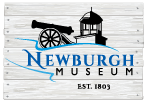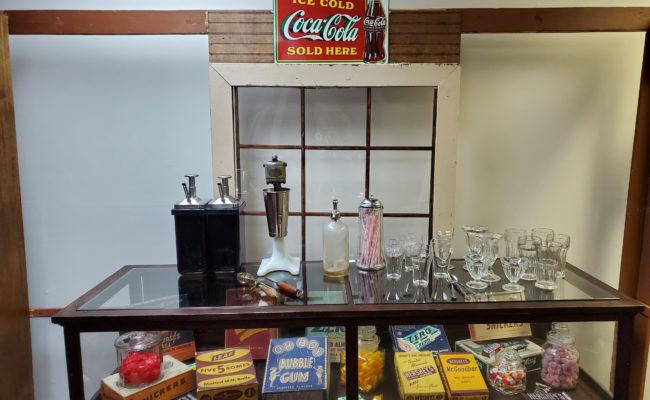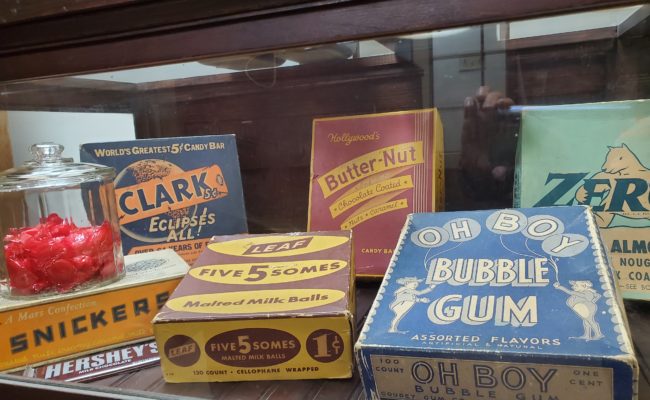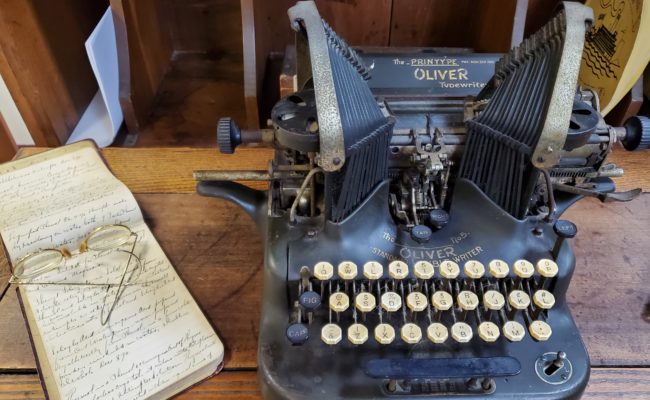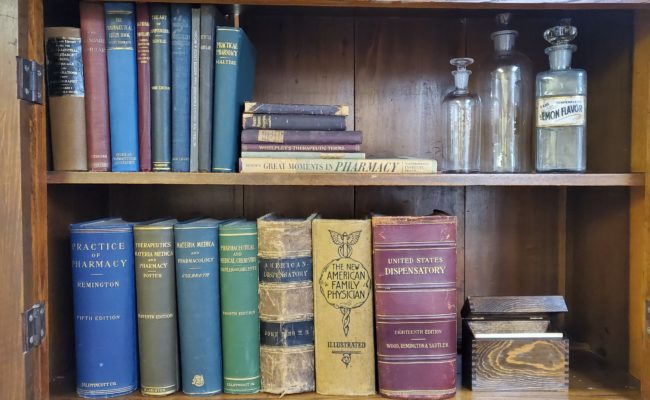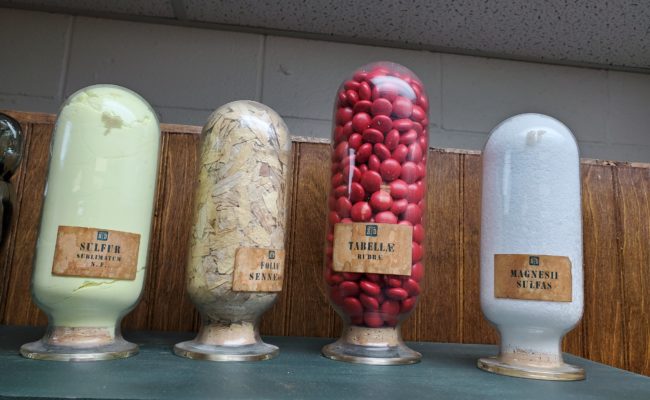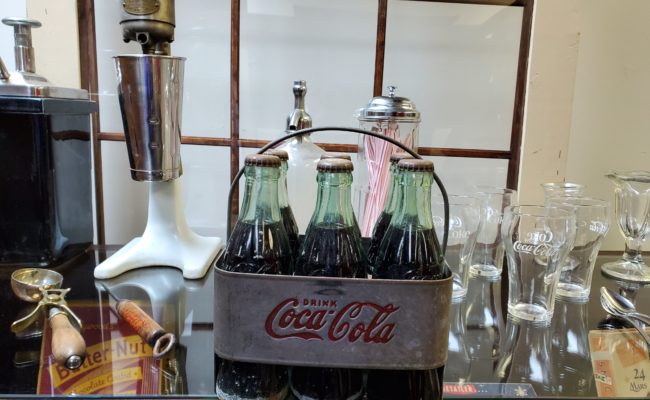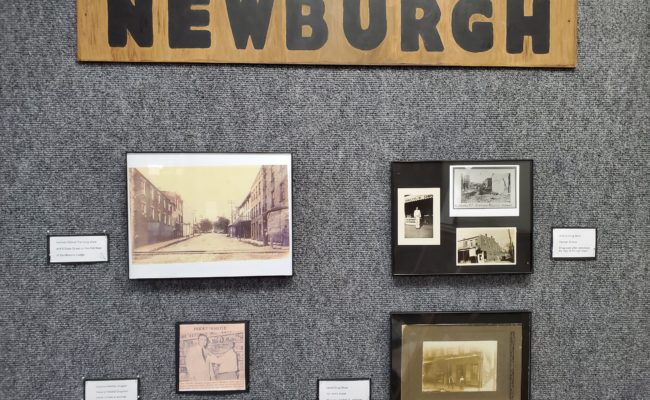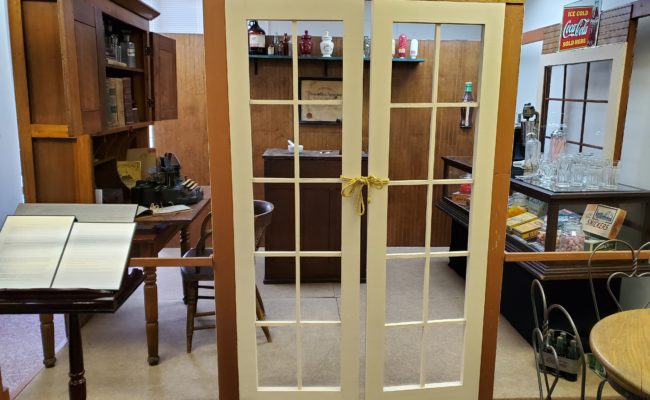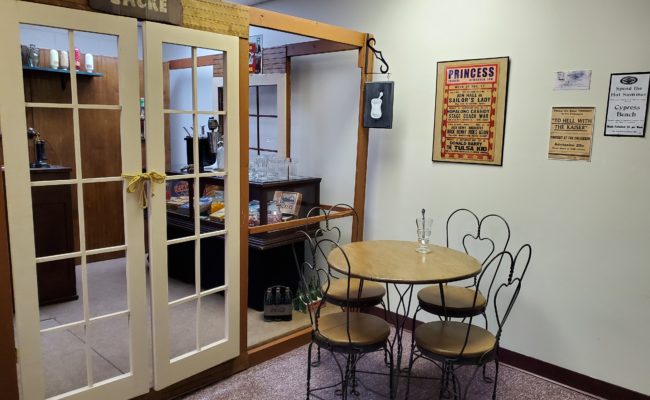Opening February 7, 2020
What do you think a drug store looked like at the turn-of-the-century? Come visit the Newburgh Museum and you will see a composite of several drug stores that existed during this period. The Newburgh Museum has built a drugstore inside the museum complete with an old-time candy counter, soda shop and a collection of teapots.
You will see a 1913 Oliver typewriter with a pharmacy machine used to print labels for prescription bottles and boxes, a pharmacy certificate from 1913, a notebook on the desk is one used in pharmacy school during the early 1900s. There are a number of apothecary jars in the desk and behind the counter and on the shelf. Many prescriptions contained opium or alcohol and some of the containers are never-opened sales man samples of various drugs and compounds.
In 1890 JC Thomas was located at 101 State Street and purchased by Edward Lacke. After Mr. Lacke’s death, his wife Caroline, who was also a licensed pharmacist and ran the business until 1937 when she sold to Clarence Westfall. One of the leading drug stores in the early 1900’s was owned and operated by Herman Brizius. His drugstore was located in the lower floor of the Masonic Lodge building at 8 State Street. Drugstores were the main place to get medical advice and prescriptions. The pharmacist was often called “Doc”.
As you walk through the exhibit you will see a candy counter with old boxes of candy bars, penny candy and the teenagers loved to hang out at the soda counter. An old soda machine used to make sodas, malts, shakes and flavored cokes is on display. An old-time soda table and chairs invite you to sit and drink a cherry or vanilla coke. Soda fountains were popular during prohibition.
A collection of teapots is in one of the display cases. Steeped tea made of various leaves, flowers or bark was a remedy often prescribed. Tea was often used for medicinal purposes and to treat minor illnesses.
The window display is currently representing black history month. The teacher in the front window would have taught at the Jefferson Street Colored School. Note the rules for early teachers. The window also displays President’s Day.
Don’t forget to notice the original candy counter from the Eble Grocery located at west Jennings and Jefferson Streets that is now a part of the Newburgh Museum gift shop. There are many new displays for you to see as you visit the museum. We look forward to seeing you on Friday and Saturdays from 11-3.
